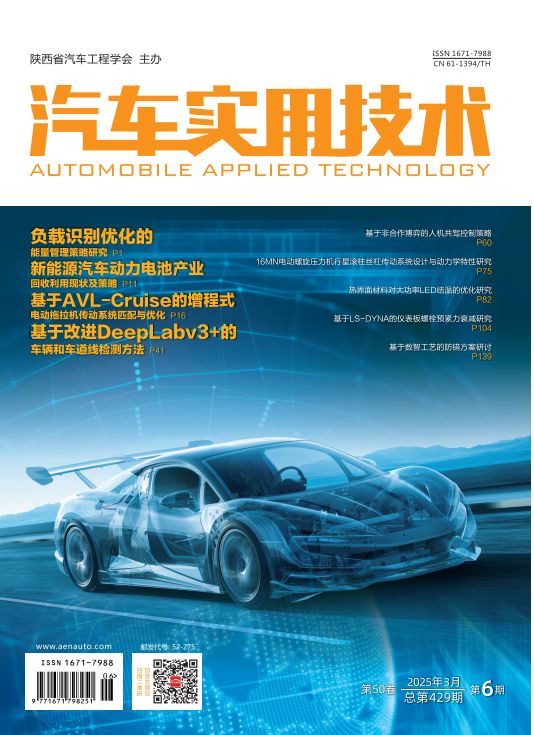|
|
The Design and Dynamic Characteristics Study of the Planetary Roller Screw
Transmission System for the 16MN Electric Screw Press
LIU Tengyu
1
, ZHAO Shengdun1,2,3*
, ZHAO Xuzhe4
, FAN Shuqin1,2,3
, REN Yujian1,2
,
LIU Dazhou1
, WANG Yongfei1,2,3
, BAI Yifan1
, HUANG Xiaopeng5
2025, 50(6):
75-81108.
DOI: 10.16638/j.cnki.1671-7988.2025.006.012
As a forging equipment, the screw press has been widely used in China. However, existing
screw presses face issues such as lubrication difficulties, high friction coefficients, low efficiency,
and high energy consumption. This paper proposes a more energy-efficient and high-performance
planetary roller screw transmission system for the 16MN gear-type electric screw press, replacing the
sliding friction in the original screw pair with rolling friction. Based on the basic working principle of
the screw press, a standard planetary roller screw pair suitable for this press is designed, and a static
finite element analysis of the single thread tooth between the screw and roller side is conducted using
ABAQUS. Finally, dynamic simulation of the complete virtual assembly of the planetary roller screw
is performed using ADAMS, validating the rationality of the theoretical design. Through theoretical
design, static analysis, and dynamic simulation, it is concluded that the structural parameter design of
the standard planetary roller screw for the screw press is reasonable and meets the working load
requirements of the gear-type electric screw press. This technology transforms the sliding friction of
the trapezoidal thread screw pair into the rolling friction of the planetary roller screw, effectively
addressing lubrication difficulties, reducing the friction coefficient, significantly improving the
efficiency of traditional screw presses, and lowering energy consumption.
References |
Related Articles |
Metrics
|

